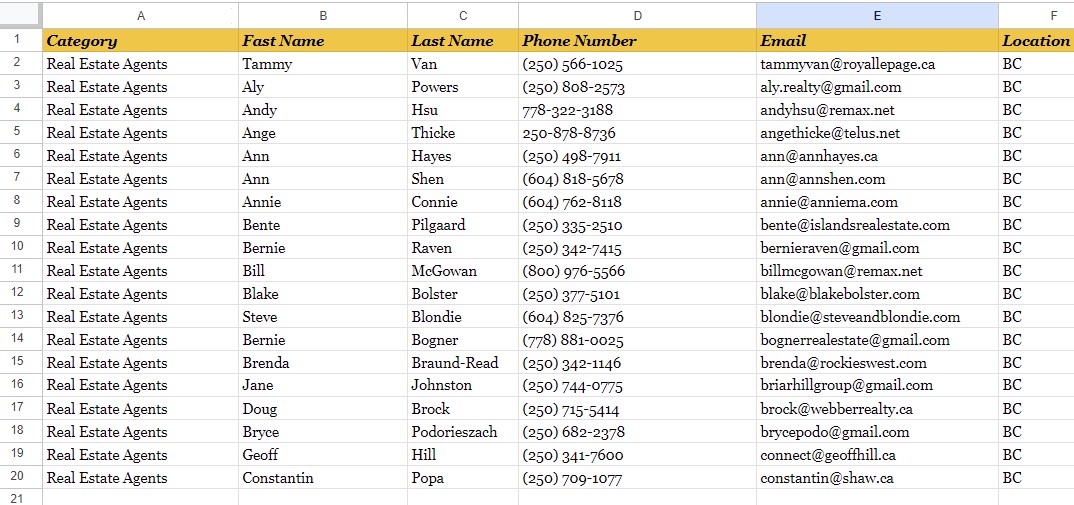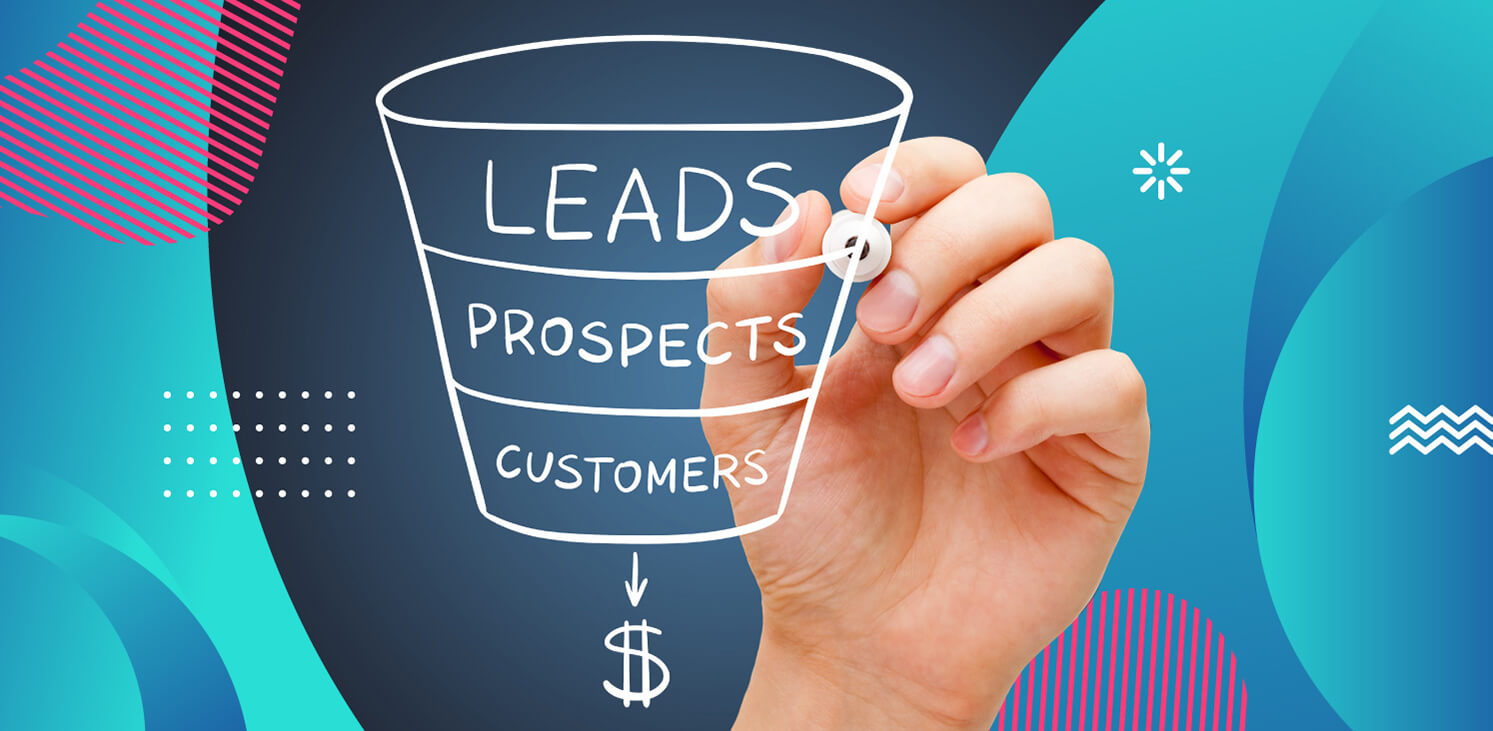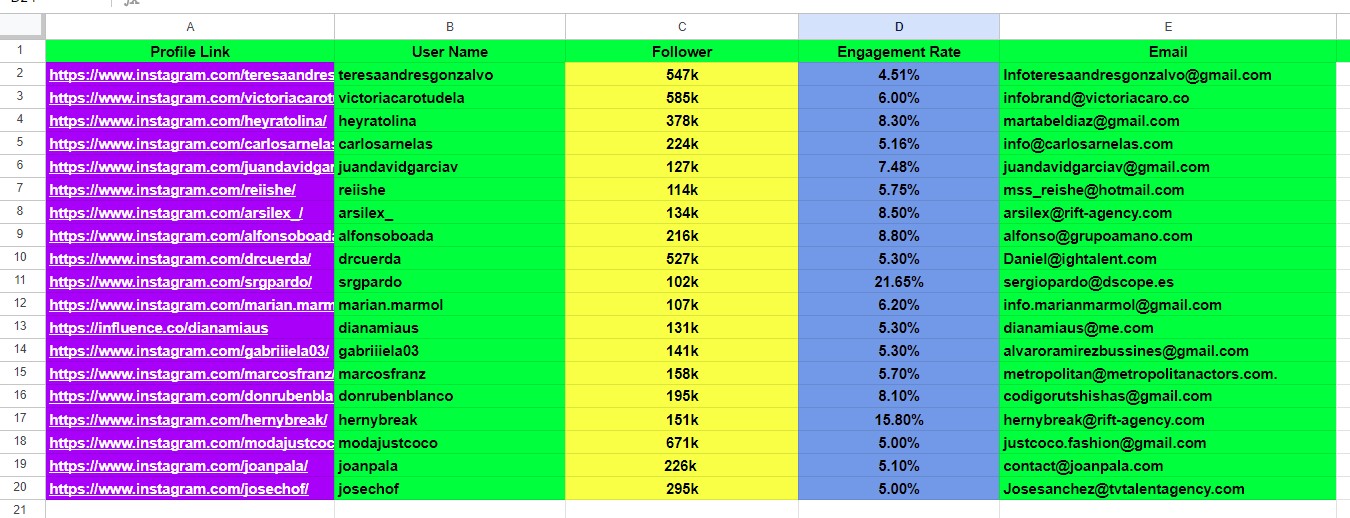In the competitive world of B2B marketing, identifying and qualifying high-quality leads is crucial for the success of your sales funnel. Generating leads is just the first step, but ensuring those leads have the potential to convert is where real value is found. Add Prospects, a company specialized in providing email list building services, understands this fundamental aspect of business growth. This article will delve into lead qualification strategies that can help your business focus on prospects who are most likely to convert, saving time, effort, and resources.
What is Lead Qualification?
Lead qualification is the process of evaluating and categorizing potential clients to determine if they are
Why Hiring a Virtual Assistant in 2024 is a Game-Changer for Your Business!🚀
Real Estate Agents Canada
Marketing Still Reigns Supreme
Lead Qualification Tips for Successful B2B Campaigns
Lead Generation
Instagram Influencer List
How to Use Freebies to Optimize Your Lead Generation
Crafting Compelling Email Subject Lines: A Comprehensive Guide
Cleaning Service Company Contact Information
Why Lead Qualification is Important
Before diving into the tips for lead qualification, it’s crucial to understand why this process is so important for businesses. Here’s how effective lead qualification can benefit your company:
- Saves Time: Instead of focusing on a large number of leads that may never convert, you can focus on fewer, more qualified prospects, thereby improving efficiency.
- Increases Conversion Rates: A well-qualified lead is more likely to convert into a paying customer because they are already interested in and aligned with your services.
- Improves ROI: Marketing and sales teams can focus their efforts and budget on leads with higher chances of converting, ensuring better ROI on lead generation activities.
- Streamlines Sales Funnel: With lead qualification, the sales process becomes smoother and more efficient, leading to shorter sales cycles.
Key Lead Qualification Tips for B2B Marketers
1. Define Your Ideal Customer Profile (ICP)
The first step in lead qualification is to understand who your ideal customers are. Your Ideal Customer Profile (ICP) outlines the characteristics of a business or person that is most likely to benefit from your offering. These characteristics might include:
- Industry: What sectors are most likely to need your product?
- Company Size: Are you targeting small businesses, mid-sized enterprises, or large corporations?
- Revenue: What is the typical revenue size of companies that convert with you?
- Geography: Where are your most successful clients located?
By narrowing down these characteristics, you can ensure that your outreach focuses on leads that resemble your ideal customer, reducing wasted effort on irrelevant prospects.
2. Segment Leads Based on Qualification Stages
Every lead in your funnel won’t be at the same stage of qualification. It’s essential to segment leads based on where they are in the buying process. Here’s a simple way to categorize leads:
- Unqualified Leads: These are new leads that have entered your funnel but have not yet shown any significant interest in your product.
- Marketing Qualified Leads (MQLs): These leads have shown interest in your product through actions such as downloading resources, signing up for newsletters, or visiting your pricing page.
- Sales Qualified Leads (SQLs): These leads have demonstrated readiness to engage with your sales team, often after a consultation, demo request, or direct inquiry.
By clearly defining these stages, you can design a strategy for nurturing each segment effectively.
3. Use Data Enrichment to Qualify Leads
At Add Prospects, we understand the value of data enrichment in the lead qualification process. Data enrichment refers to enhancing your lead profiles with additional information, such as company size, revenue, or technology stack. This extra data helps you make more informed decisions about which leads to prioritize.
For instance, using a lead’s firmographic data, such as the number of employees or annual revenue, can help determine whether they fall within your ICP. Tools like Clearbit, ZoomInfo, or Crunchbase can automate data enrichment by pulling in details about a company or individual, enabling more accurate qualification decisions.
4. Prioritize Leads Based on the BANT Framework
The BANT framework is a popular model for qualifying leads and is highly effective in B2B contexts. BANT stands for:
- Budget: Does the lead have the budget to purchase your solution?
- Authority: Is the lead a decision-maker, or do they have influence within the buying process?
- Need: Does the lead have a genuine need for your product or service?
- Timeline: Is the lead planning to make a purchase in the near future, or are they exploring options for the long term?
By scoring each lead based on these four factors, you can prioritize high-quality leads that meet all the necessary criteria. For example, a lead that has a clear need and budget but lacks decision-making authority might require nurturing until they can introduce you to the appropriate stakeholders.
5. Implement Lead Scoring
Lead scoring is a powerful method for ranking leads based on their perceived value or likelihood of conversion. This process assigns scores to leads based on predefined criteria such as:
- Engagement with Marketing: How often do they engage with your content (e.g., opening emails, attending webinars, etc.)?
- Demographics: Does the lead’s company match your ICP?
- Behavioral Data: Are they visiting your website, requesting demos, or asking for more information?
For example, a lead who frequently visits your pricing page and has downloaded multiple whitepapers may receive a higher score than one who only signed up for a newsletter.
Most CRM systems, like HubSpot or Salesforce, allow you to implement automated lead scoring algorithms to streamline this process.
6. Conduct Lead Qualification Calls
Even with automated lead scoring, personal outreach can be incredibly valuable in lead qualification. Conducting lead qualification calls gives your sales team an opportunity to gauge a prospect’s interest, assess their needs, and understand their buying intent.
When conducting these calls, sales representatives should focus on asking qualifying questions such as:
- What challenges are you currently facing that you hope our product can solve?
- How urgent is this problem for you to address?
- What’s your decision-making process, and who is involved?
These types of questions can help you assess whether the lead is ready to move forward in the sales process or if further nurturing is required.
7. Use Email Segmentation and Targeting
Email marketing is still one of the most effective ways to qualify leads. By segmenting your email lists based on the behavior and profile of leads, you can tailor your messages to speak directly to their pain points and needs.
For example, if you notice a group of leads regularly interacting with your content but not yet converting, send them targeted emails addressing specific concerns they may have. Offering case studies, testimonials, and solutions that align with their problems can help push them further down the sales funnel.
At Add Prospects, we offer email list building services that focus on finding verified, segmented leads, allowing you to execute personalized email campaigns that resonate with your target audience.
8. Qualify Leads Using Sales Funnels and Landing Pages
Your website plays an essential role in lead qualification. Design your sales funnel and landing pages to capture qualified leads. The type of content you use and the CTAs (calls to action) you provide can help determine whether visitors are serious about your offer.
For example, offering free tools, calculators, or demos can help you gauge interest. If a lead is willing to give detailed information about their company in exchange for a demo or free trial, that’s a strong signal they are interested in moving forward with your product.
Common Challenges in Lead Qualification (and How to Overcome Them)
Challenge 1: Insufficient Information
Sometimes leads come into your funnel with very little data attached, making it difficult to qualify them. In these cases, leveraging data enrichment services or tools like Clearbit and ZoomInfo can provide additional insights into the lead, such as company size, industry, or even specific contact information for decision-makers.
Challenge 2: Focusing Too Much on Quantity Over Quality
Many sales teams are driven by the desire to generate as many leads as possible, but this can often result in wasted effort if the leads aren’t properly qualified. It’s essential to strike the right balance between generating a large number of leads and ensuring those leads meet the basic criteria for qualification.
One way to avoid this issue is by setting up automated lead scoring systems that rate the quality of leads based on pre-set factors like budget, need, and engagement.
Challenge 3: Long Sales Cycles
B2B sales cycles can often be long and complex, making it hard to keep leads engaged throughout the process. To overcome this, nurturing campaigns are key. Regular follow-ups with value-added content (like whitepapers, webinars, and product updates) can keep your prospects warm and prevent them from losing interest.
Final Thoughts: Lead Qualification Drives Better Results
Lead qualification is a critical element of a successful sales and marketing strategy. Without proper qualification, you risk spending time on leads that will never convert, while missing out on high-potential prospects. Add Prospects understands the importance of high-quality leads, and our email list-building services are designed to help businesses focus their efforts on the right audience.
By incorporating these lead qualification tips into your workflow, your business can enhance its conversion rates, shorten sales cycles, and ultimately drive better outcomes. Remember, the key to successful B2B marketing lies in not just generating leads, but in qualifying and nurturing the right leads to move them down the sales funnel.









